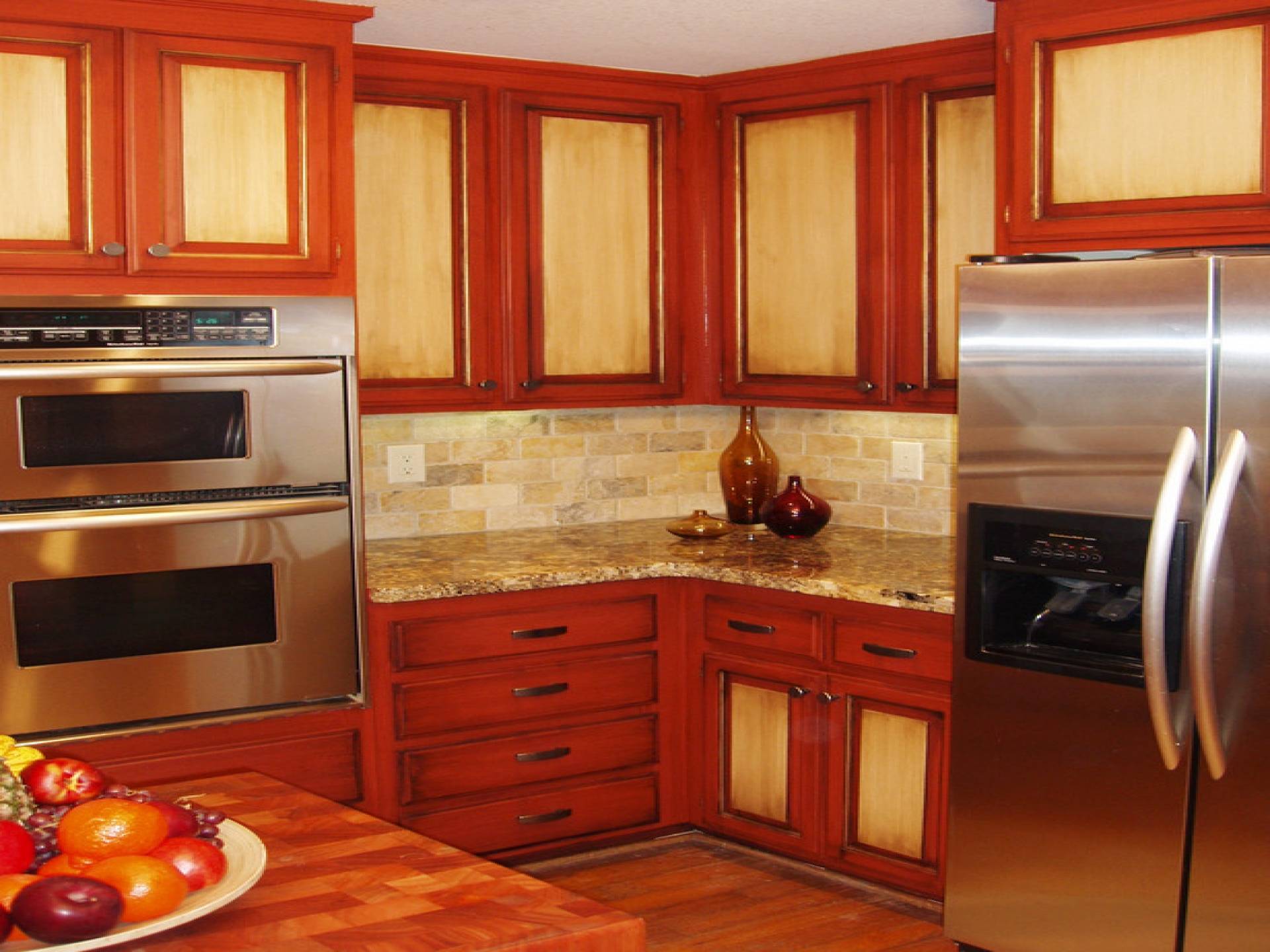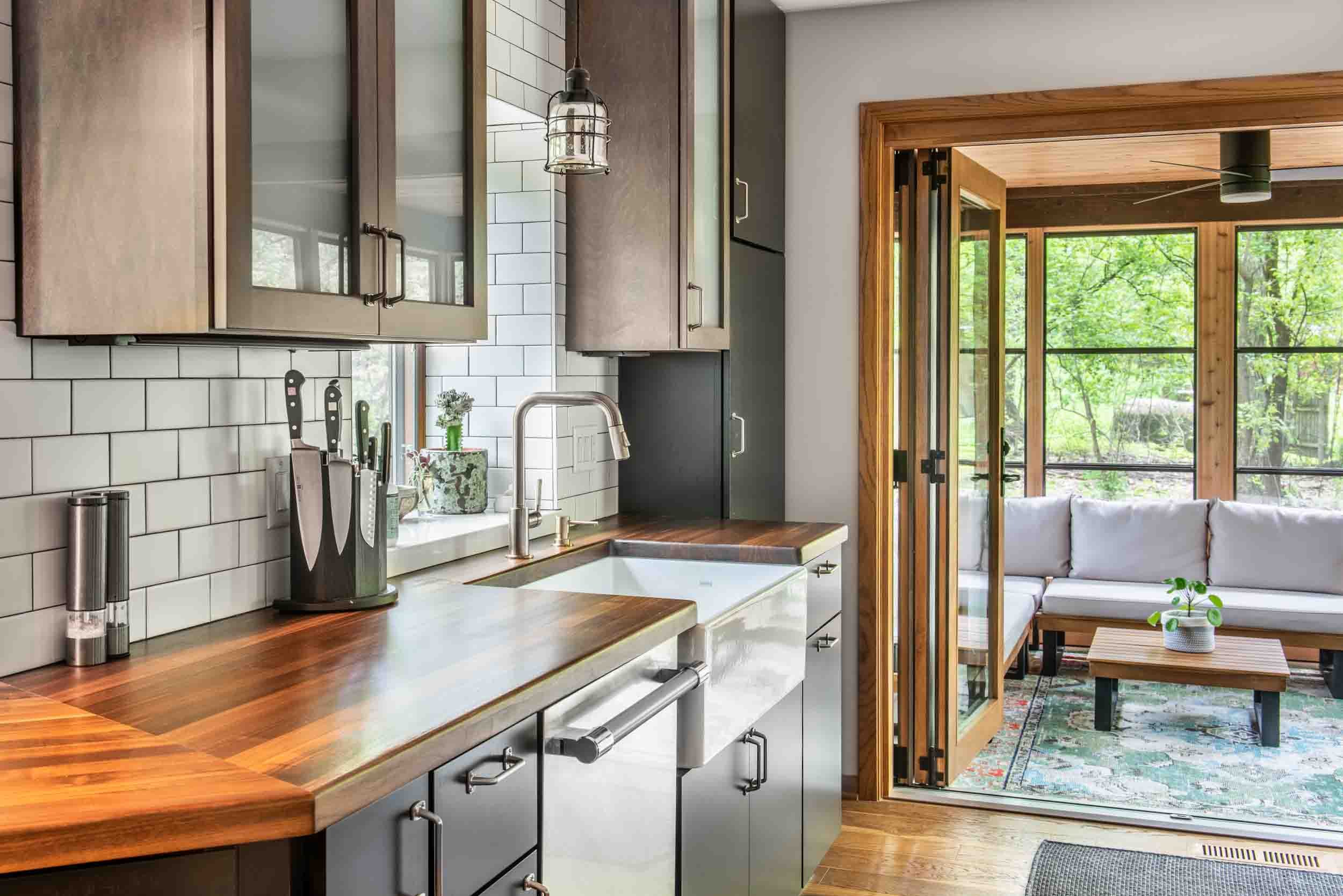Types of Kitchen Cabinet Door Edge Trim

Selecting the right edge trim for kitchen cabinet doors significantly impacts both the aesthetic and functional aspects of the cabinetry. The choice depends on factors such as budget, desired style, and the overall durability needed for the kitchen environment. This section will explore the various materials and profiles available for kitchen cabinet door edge trim.
Materials Used for Kitchen Cabinet Door Edge Trim
Several materials are commonly used for kitchen cabinet door edge trim, each offering a unique combination of durability, cost, and aesthetic appeal. Wood, PVC, and aluminum are popular choices, each with its own set of advantages and disadvantages.
Wood edge trim offers a classic and elegant look, seamlessly integrating with wooden cabinets. Hardwoods like oak or maple provide superior durability and resistance to wear and tear, but come at a higher cost. Softer woods like pine are more affordable but require more careful handling and are susceptible to damage. The natural grain and color variations of wood add warmth and character to the kitchen.
PVC (polyvinyl chloride) edge trim is a cost-effective alternative to wood. It is available in a wide range of colors and finishes, mimicking the appearance of wood or other materials. PVC is moisture-resistant and relatively easy to clean, making it suitable for high-humidity kitchen environments. However, it may not be as durable as wood and can be susceptible to scratching or chipping.
Aluminum edge trim is a durable and modern option. It is resistant to scratches, dents, and moisture damage, making it a long-lasting choice. Aluminum trim is typically available in brushed or polished finishes, providing a sleek and contemporary look. However, aluminum can be more expensive than PVC and may not offer the same warmth and character as wood.
Edge Profiles for Kitchen Cabinet Door Trim
The profile of the edge trim refers to its shape and contour. Several common profiles are available, each contributing to a distinct aesthetic.
The bullnose profile features a rounded edge, creating a smooth and softened appearance. It is a popular choice for its comfortable feel and its ability to minimize sharp corners, making it safer for households with children. A bullnose edge often adds a more traditional or classic touch to the cabinetry.
The ogee profile features a more complex, S-shaped curve. This elegant and sophisticated profile adds a touch of refinement and detail to the cabinet doors. It is often associated with more ornate or traditional kitchen designs.
The bevel profile has a simple, angled edge. This creates a clean and modern look, often preferred in contemporary kitchens. The bevel profile can be subtle or more pronounced depending on the angle of the bevel.
Comparison of Kitchen Cabinet Door Edge Trim Types
The following table summarizes the key characteristics of four common types of kitchen cabinet door edge trim:
| Material | Cost Range | Durability | Common Styles |
|---|---|---|---|
| Solid Wood (Oak/Maple) | High | High | Traditional, Shaker, Craftsman |
| Solid Wood (Pine) | Medium | Medium | Traditional, Rustic |
| PVC | Low to Medium | Medium | Contemporary, Traditional (imitating wood) |
| Aluminum | Medium to High | High | Modern, Contemporary |
Installation Methods for Kitchen Cabinet Door Edge Trim

Installing edge trim on kitchen cabinet doors enhances their appearance and durability. The choice of installation method depends on the type of trim, the material of the cabinet doors, and the desired level of permanence. Several methods exist, each with its own set of advantages and disadvantages.
Adhesive Installation
Adhesive installation is a popular method for applying edge trim, particularly for thinner trims and those made of flexible materials like vinyl or self-adhesive options. This method is generally quick and easy, requiring minimal tools and expertise.
Kitchen cabinet door edge trim – The process typically involves:
- Cleaning the edge of the cabinet door thoroughly to ensure a strong bond. Any dust, grease, or old finish should be removed.
- Applying a bead of appropriate adhesive evenly along the edge of the cabinet door. The type of adhesive should be compatible with both the trim and the cabinet door material.
- Pressing the edge trim firmly onto the adhesive, ensuring complete contact along its entire length. A roller can be used to remove air bubbles and ensure a strong bond.
- Allowing the adhesive to cure completely according to the manufacturer’s instructions before handling the door.
Tools and Materials:
- Appropriate adhesive (e.g., construction adhesive, contact cement, self-adhesive backing)
- Measuring tape
- Utility knife or scissors
- Cleaning solvent (e.g., denatured alcohol)
- Cloth or sponge
- Roller (optional, for improved adhesion)
Advantages:
- Easy to use and relatively quick installation.
- No specialized tools required.
- Cost-effective.
Disadvantages:
- May not be as durable as other methods, particularly in high-moisture environments.
- Adhesive failure can occur over time, requiring reapplication.
- Less suitable for thicker or heavier trims.
Nailing Installation
Nailing is a more permanent installation method suitable for thicker, harder trims such as wood or metal. This method provides a strong and durable bond, but requires more precision and skill.
The process generally involves:
- Precisely measuring and cutting the trim to the correct length.
- Pre-drilling pilot holes in the trim to prevent splitting. The size of the pilot hole should be slightly smaller than the diameter of the nail.
- Positioning the trim along the edge of the cabinet door.
- Driving nails into the trim, ensuring they are evenly spaced and countersunk.
- Filling the nail holes with wood filler and sanding smooth.
- Applying a finishing coat to match the cabinet door.
Tools and Materials:
- Finishing nails
- Nail gun or hammer
- Measuring tape
- Saw
- Drill with pilot bit
- Wood filler
- Sandpaper
- Finishing coat (paint or stain)
Advantages:
- Provides a very strong and durable bond.
- Suitable for thicker and heavier trims.
Disadvantages:
- Requires more skill and precision.
- Can be more time-consuming.
- Increased risk of damaging the cabinet door if not done carefully.
Screwing Installation
Similar to nailing, screwing provides a strong and permanent bond. It is often preferred for thicker trims or applications where extra strength and stability are required.
The installation process follows a similar pattern to nailing, but utilizes screws instead of nails:
- Precisely measure and cut the trim to length.
- Pre-drill pilot holes in the trim to prevent splitting.
- Position the trim along the edge of the cabinet door.
- Drive screws into the trim, ensuring they are evenly spaced and countersunk.
- Fill screw holes with wood filler and sand smooth.
- Apply a finishing coat.
Tools and Materials:
- Wood screws
- Screwdriver or drill
- Measuring tape
- Saw
- Drill with pilot bit
- Wood filler
- Sandpaper
- Finishing coat (paint or stain)
Advantages:
- Provides a very strong and durable bond.
- Suitable for thicker and heavier trims.
- Easier to remove and replace than nailed trim.
Disadvantages:
- Requires more skill and precision than adhesive installation.
- Can be more time-consuming.
- Increased risk of damaging the cabinet door if not done carefully.
Design Considerations for Kitchen Cabinet Door Edge Trim

Choosing the right edge trim for your kitchen cabinets significantly impacts the overall aesthetic. The trim’s profile, material, and finish interact with the cabinet door style to create a cohesive and visually appealing design. Careful consideration of these elements ensures a harmonious look that complements your kitchen’s style and enhances its functionality.
Edge Trim and Cabinet Door Style Compatibility
Different edge trim styles complement various cabinet door styles in distinct ways. A simple, clean edge profile often works best with contemporary designs, while more ornate trims can enhance traditional styles.
- Shaker Cabinets: Shaker doors, with their simple frame and recessed panel, pair well with a variety of trims. A simple bevel, a subtle ogee, or even a flat edge can all work effectively. A more ornate profile might overpower the Shaker’s understated elegance. For example, a slightly rounded edge (a simple bevel) would create a soft, refined look, while a sharp, square edge would give a more modern feel.
- Slab Cabinets: Slab doors, characterized by their flat, uninterrupted surface, benefit from a trim that adds subtle definition without disrupting the minimalist aesthetic. A very thin edge banding, or a slightly rounded edge, can create a refined look and prevent the door from feeling too stark. An overly decorative trim would clash with the clean lines of slab doors. A simple edge band in a contrasting color could also provide a stylish accent.
- Raised Panel Cabinets: Raised panel doors, with their raised center panel, lend themselves to more decorative edge trims. An ogee profile, a cove, or even a more elaborate molding can enhance the detail and sophistication of the door. A simple flat edge might appear too plain with this style. A decorative ogee profile would complement the curves of the raised panel, while a beaded edge would offer a more traditional look.
Kitchen Cabinet Design Examples with Edge Trim
Below are three distinct kitchen designs showcasing the interplay between cabinet door style and edge trim.
- Modern Minimalist Kitchen: Slab-style doors in a matte white finish are paired with a simple, thin, square edge trim in a matching white. This creates a seamless, clean look that is both contemporary and sophisticated. The lack of ornamentation on both the door and the trim emphasizes the overall minimalist aesthetic. The rationale is to maintain the uncluttered, sleek lines characteristic of modern design.
- Traditional Farmhouse Kitchen: Raised panel doors in a warm, creamy white are accented with a medium-sized ogee edge trim in a contrasting dark wood stain. This creates a visually interesting contrast and enhances the traditional details of the raised panel doors. The ogee profile adds a touch of elegance without being overly ornate, complementing the rustic charm of a farmhouse kitchen. The contrasting stain provides a visual pop, highlighting the door’s craftsmanship.
- Transitional Kitchen: Shaker-style doors in a light gray finish are complemented with a subtle bevel edge trim in a slightly darker gray. This creates a sophisticated and balanced look. The subtle bevel adds a touch of dimension and refinement without being overly fussy. The slight color variation provides visual interest while maintaining a cohesive palette that works in a transitional design, blending modern and traditional elements.
Rewritten Article on Kitchen Cabinet Door Edge Trim
Cabinet door edge trim is a crucial design element that significantly impacts the overall aesthetic of a kitchen. The choice of trim profile, material, and finish should be carefully considered in relation to the cabinet door style.
Proper trim selection enhances the cabinet’s visual appeal and complements the overall kitchen design.
Shaker doors, known for their simple frame and recessed panel, pair well with subtle trims like a simple bevel or a slightly rounded edge. Slab doors, characterized by their flat surface, benefit from a thin edge banding or a rounded edge to add subtle definition. Raised panel doors, with their raised center panel, allow for more decorative trims such as ogee or cove profiles.
The trim’s material and finish should harmonize with the cabinet’s material and color palette.
Consider the kitchen’s style when selecting the trim. Modern kitchens often feature minimalist designs with clean lines, while traditional kitchens embrace more ornate details. A well-chosen trim can elevate the look of your kitchen cabinets, adding a touch of sophistication or a playful accent. Remember, the right trim can seamlessly integrate with your cabinets or provide a striking contrast, depending on your desired effect.
